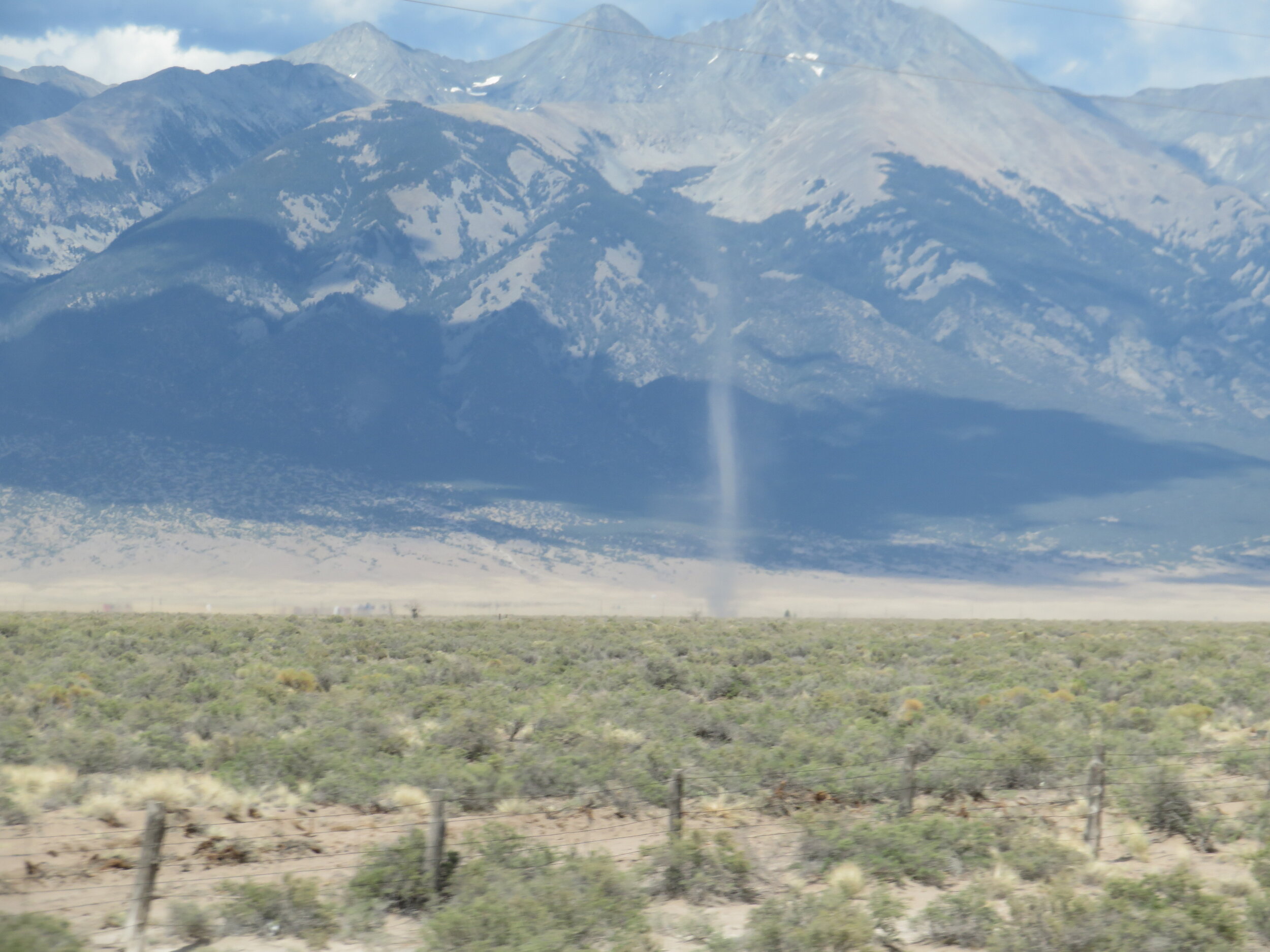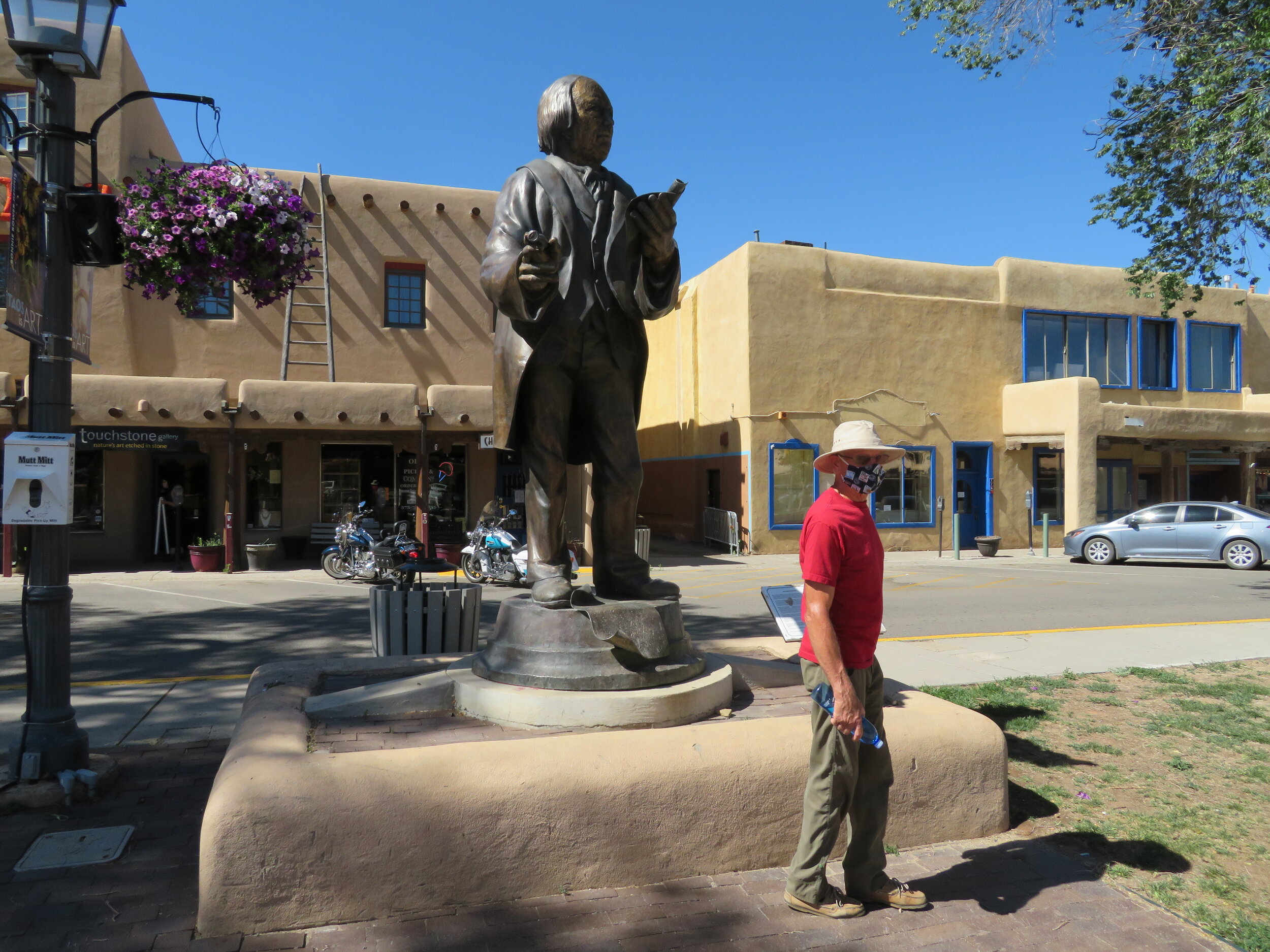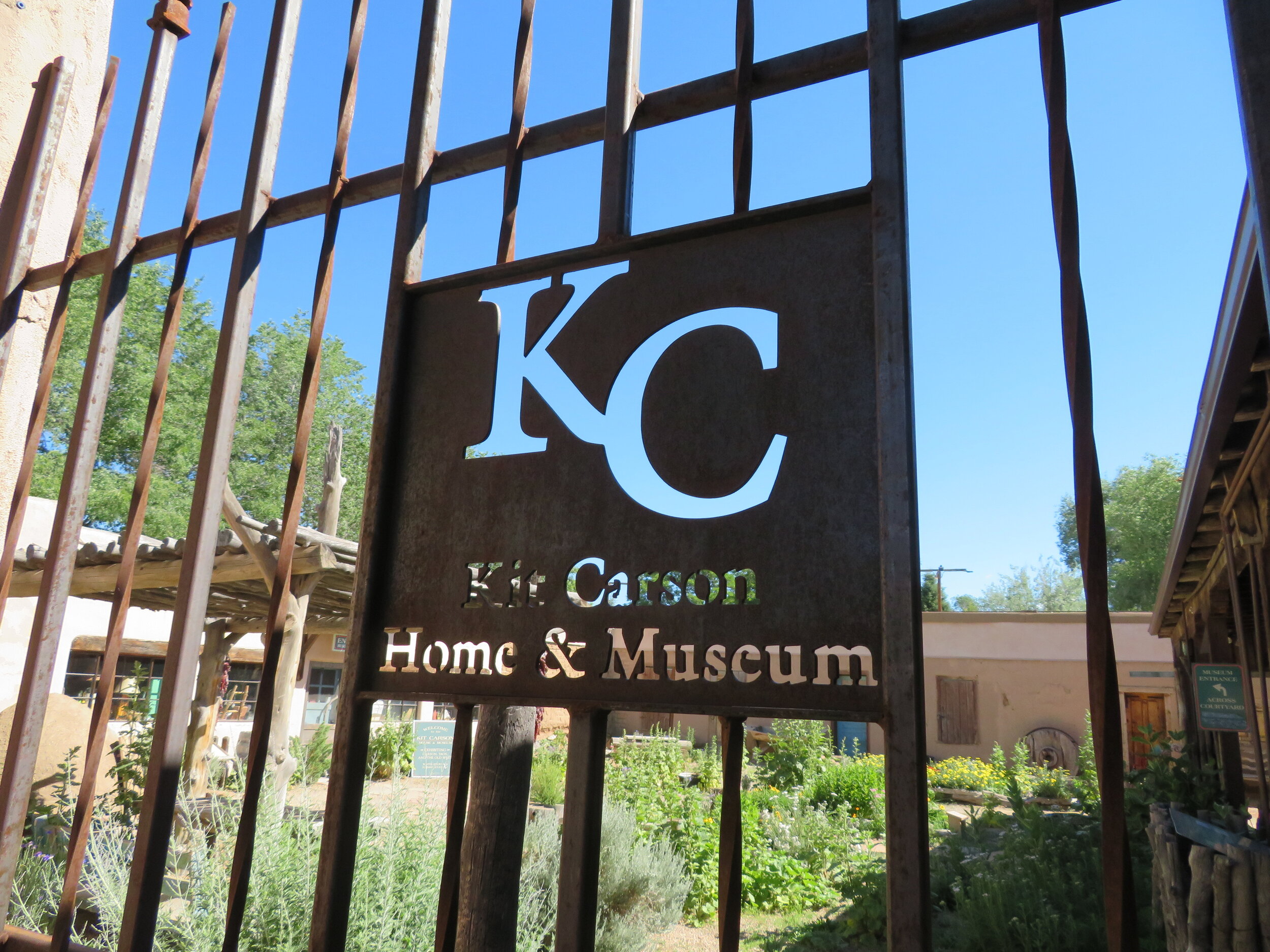A Tiny Taste of Taos
/‘El Santero’ a mural by George Chacon
We last visited Taos, New Mexico two or three decades ago. We remembered it as a charming, quaint, artsy town with a decidedly Native American/Spanish influence evidenced immediately in its adobe structures and the large spacious plaza in the old town. Art galleries, boutiques and restaurants abounded, as well as history and culture and it seemed like an appealing place to revisit along our route. So after climbing down from the volcano and regaining my composure after yet another rattlesnake encounter, we headed west.
Dust devils whip up spontaneously, tall spouts of brown dust twirling across the arid, flat land.
Old building in Cimarron, New Mexico
State Road 64 is a pleasant enough ride past acres and acres of dun-colored grasslands. Dust devils whip up spontaneously, tall spouts of brown dust twirling across the arid, flat land. Grazing cattle mingle with pronghorns. Long stretches of ranch land are punctuated with tired old cowboy towns like Colfax and Cimarron. This land was originally all part of Mexico until the Mexican-American War (1846-1848) in which Mexico ‘sold’ a huge parcel of land to the USA for $15million in the Gadsen Purchase. After awhile, we started our climb into the mountains and then ski areas like Angel Fire and Eagle Nest took over the landscape.
Taos is Art!
Snuggled in the Sangre de Cristo Mountains, Taos boasts that it has ‘more galleries than gas stations and more museums and historic homes than grocery stores.’ According to the local brochures, artists began settling in Taos c.1899 and formed the Taos Society of Artists in 1915. In time, the Taos art colony developed. The subsequent prolific art colony focused mainly on local and southwestern themes, especially of the Taos Pueblo.
Taos Pueblo - Photo credit: Nick Travels blog
The Taos Pueblo, which has been continually inhabited for more than 1000 years, is the only living Native American community designated as both a World Heritage site by UNESCO (1992) and a National Historic Landmark. ‘At some places five stories high, this pueblo is a combination of many individual homes with common walls...a centuries old Native American apartment house. There are over 1,900 Taos native people living within the greater pueblo-area community, but only about 150 live within the main pueblo buildings year-round.’ We’d visited a long time ago; it was on our must-see list again. All that and Kit Carson and his family lived here in Taos, too. Lots to investigate, explore and enjoy.
Except, of course, the coronavirus was here before us. We were disappointed, but not surprised, to find empty streets and plazas. What we remembered as a vibrant, lively mountain town was closed for business for the most part. The Visitor Center sign indicated it was closed indefinitely, its entrance littered with windblown brochures, leaves and debris from an overfilled trash can. A few shops and galleries were open. Many, however, were open by appointment only. Museums were closed ‘till further notice’. Open restaurants were few and far between and most offered only take-out. A couple eateries with outside dining had limited menus and limited seating. We were glad to see that the town was taking mask-wearing very seriously. No mask… no entry. Even WalMart had a sentry at the door turning unmasked folks away.
Taos takes mask-wearing seriously.
Padre Antonio Jose Martinez (and David) in the Taos Plaza
We settled for a self-guided tour of the town, using on-line research and a few brochures we scavenged off the ground at the Visitor Center. We headed to the main Plaza first, usually bustling, but now mostly empty. The shops surrounding the plaza were mostly closed. The La Fonda Hotel (Spanish for ‘the inn”), a mercantile store back In 1820 on the historic Taos Plaza that also rented rooms, and now an upscale hotel might have been open, we couldn’t tell and didn’t venture inside.
The historic La Fonda Hotel on the Taos Plaza
We headed down historic Bent Street named after Governor Charles Bent who was ‘scalped and killed by Pueblo warriors during the Taos Revolt, on January 19, 1847. During the Taos Revolt, Bent’s horses were set free from their stable. It is said that late at night you can hear the sound of neighing and their hooves can still be heard running down the street.’ The wall mural as we entered the street told the story.
Bent Street mural
We wandered past Our Lady of Guadeloupe church, an adobe, but modern structure and also closed. We headed to the John Dunn plaza, usually thriving, but where only a handful of shops were open. One culinary/kitchen shop was open and we ducked in and bought something simply because the shopkeeper looked lonely and forlorn.
A mixed religious message?
Taos may be pretty much closed commercially, but they’re in touch with current events.
The Kit Carson Home and Museum was closed. We finally figured we’d just have to settle for walking around. The Kit Carson State Park is also the location of an historic graveyard including the gravestones of Kit Carson and his third wife, Josefa. The graveyard looked neglected and unkempt. Tall grass and weeds were overtaking the grave sites. A few stones were knocked over and some had been tagged with spray paint.
Kit Carson Home & Museum
According to Wiki, ‘Christopher Houston Carson ( 1809–1868), aka Kit Carson, was an American frontiersman. He was a fur trapper, wilderness guide, Indian agent and U.S. Army officer. He became a frontier legend’.
Kit Carson… quite the guy, huh?
Kit Carson’s grave site
We retreated to Blue and found a mouse, who introduced herself as Miriam, waiting for us at the driver’s side door. She was obviously looking to hitch a ride. We thought she might be a packrat, but she carried very little gear and since she took up so little space, we found a nook for her on the dashboard where she has been quietly residing ever since.
Miriam, a new passenger aboard Blue
On our way out of town, we planned to stop at the Taos Pueblo where we were met with a roadblock. The Pueblo was closed to visitors. Again, no surprise, but a definite disappointment. We headed out of town knowing that we’d really not visited Taos at all. Maybe next time when things are back to normal… whenever that shall be.
Join us as we continue north to Rio Grande del Norte National Monument and some Colorado camping.

















